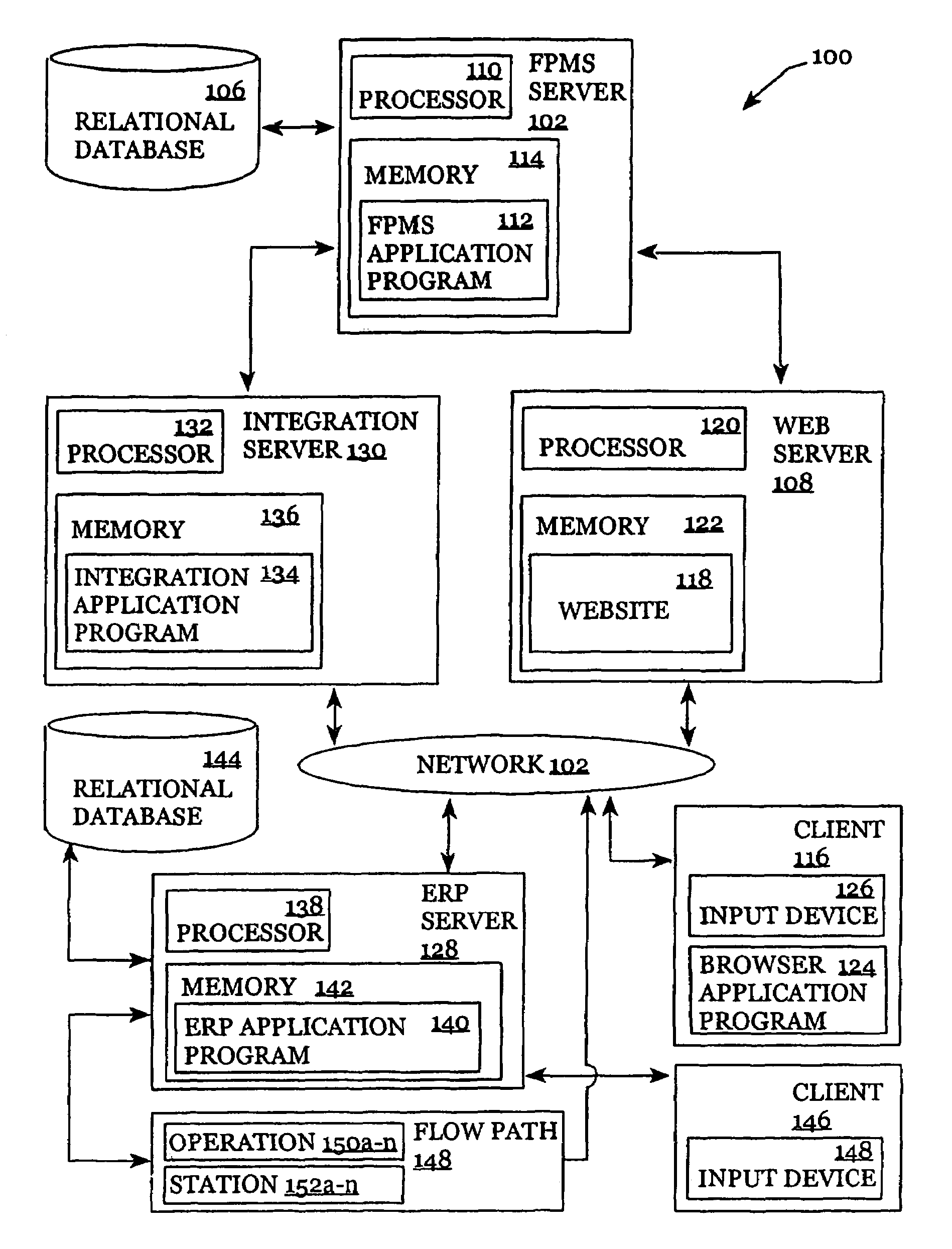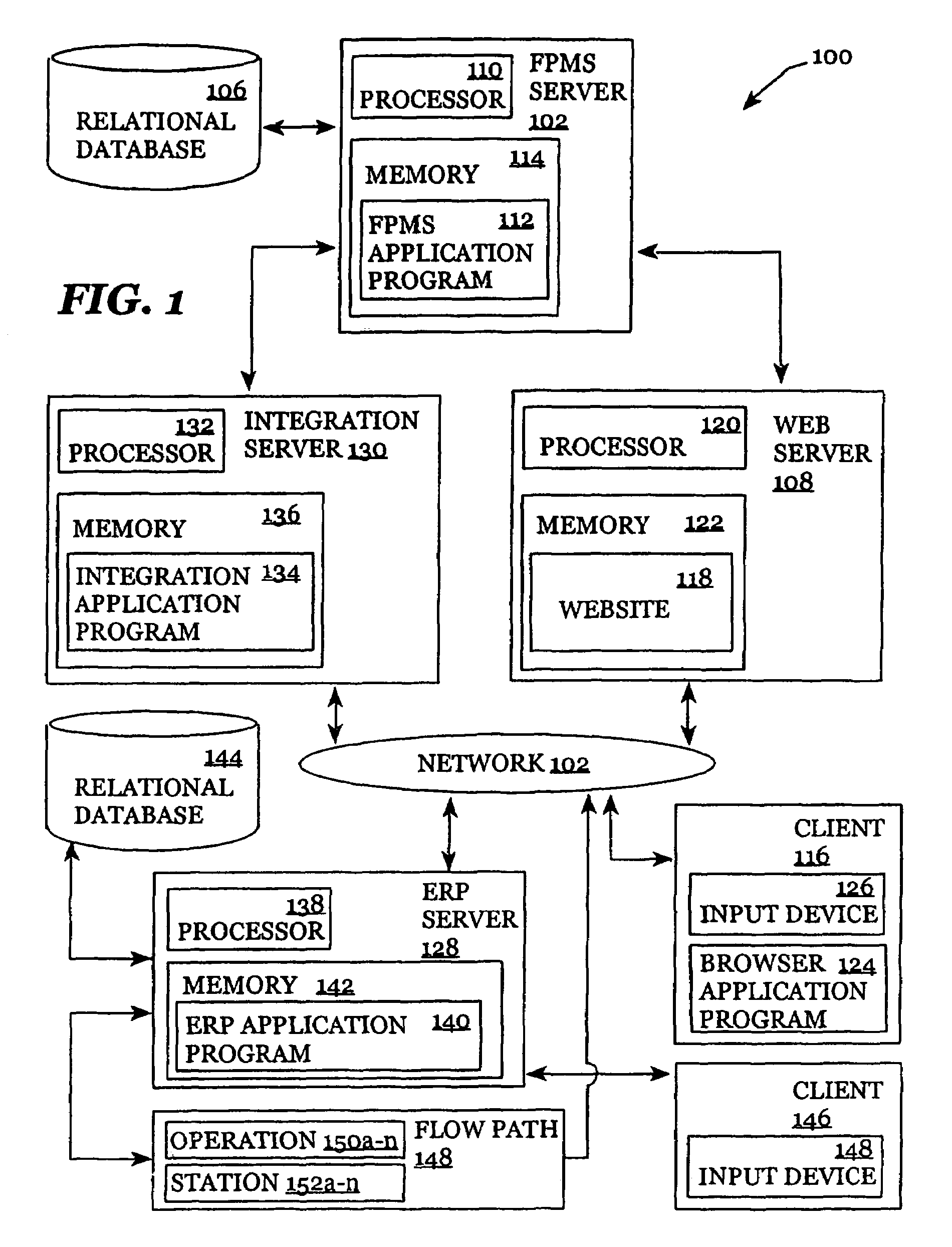Associated systems and methods for improving planning, scheduling, and supply chain management
a technology of supply chain management and associated systems, applied in the field of inventory and supply chain management, can solve the problems of high cost and service level, the inability of conventional inventory management systems to provide effective mechanisms for optimally configuring an existing supply, the timing and reliability of resupply, etc., and achieve the effect of less time for a particular item
- Summary
- Abstract
- Description
- Claims
- Application Information
AI Technical Summary
Benefits of technology
Problems solved by technology
Method used
Image
Examples
Embodiment Construction
[0050]The systems and methods for improving planning, scheduling, and supply chain management described herein can be implemented by a computer system, such as 100 in FIG. 1. Other embodiments can be implemented with other systems in accordance with the invention.
[0051]Various systems in accordance with embodiments of the invention may be constructed. FIG. 1 is a diagram illustrating a system 100 in which embodiments of the invention may operate. The invention may operate and can be embodied in other systems as well. Reference will now be made in detail to exemplary embodiments of the invention as illustrated in the accompanying drawings. The same reference numbers are used throughout the drawings and the following description to refer to the same or like parts.
[0052]An example of a system 100 in accordance with various embodiments of the invention is illustrated in the context of a networked computer environment. Other environments exist in which other systems in accordance with va...
PUM
 Login to View More
Login to View More Abstract
Description
Claims
Application Information
 Login to View More
Login to View More - R&D
- Intellectual Property
- Life Sciences
- Materials
- Tech Scout
- Unparalleled Data Quality
- Higher Quality Content
- 60% Fewer Hallucinations
Browse by: Latest US Patents, China's latest patents, Technical Efficacy Thesaurus, Application Domain, Technology Topic, Popular Technical Reports.
© 2025 PatSnap. All rights reserved.Legal|Privacy policy|Modern Slavery Act Transparency Statement|Sitemap|About US| Contact US: help@patsnap.com



